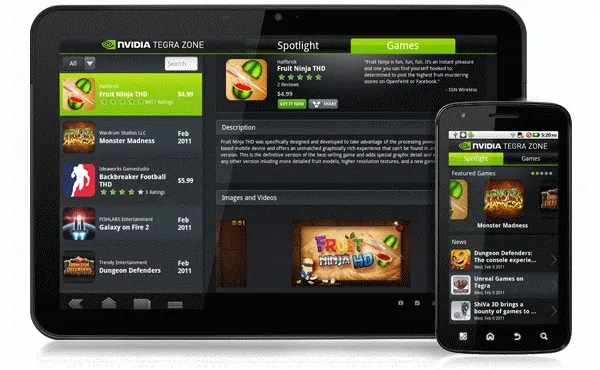During an earnings conference call, Sanjay Jha, CEO of Motorola Mobility, articulated part of the problem, saying, “Consumers want more apps for Android tablets.”
He’s partly right I suppose. I don’t know the exact number, but there’s a hundred or so tablet optimized apps in the Android Market right now, some three months after the Xoom release. I’d hardly blame that on developers though. I mean, it isn’t like Moto gave developers a lot of incentive to develop with high tablet sales. Developers don’t develop to help Moto sell tablets, they develop because people buy the tablets and want apps to run on them. That’s not happening right now.
It’s pretty clear that somebody gets it, and that somebody is none other than Jen-Hsun Huang, CEO of Nvidia. If you read the specifications of the Honeycomb tablets then you’ve noticed that Nvidia Tegra 2 chips run them all, so this guy right here has skin in the game. This is what he said to Cnet about the piss poor Honeycomb tablet sales:
That’s not the whole story, according to Nvidia CEO Jen-Hsun Huang, who I chatted with on Thursday. Nvidia’s Tegra 2 is the core piece of silicon inside Honeycomb tablets, including the Xoom and the Samsung Galaxy Tab 10.1.
“It’s a point of sales problem. It’s an expertise at retail problem. It’s a marketing problem to consumers. It is a price point problem,” he said, for starters.
I’ve personally passed on all of the current crop of Honeycomb tablets, choosing instead to hang on to my ancient iPad 1, waiting for something better to come along. I don’t want a tablet that was made by a phone manufacturer, and to date that’s been Motorola. However, that also rules out LG, HTC and Samsung. They don’t understand devices once you get past the phone and it’s clear when you look at the stuff they cram in to these devices.
Phone makers understand carrier subsidies so there is no thought given to the actual retail price of their products. VZW, Sprint or T-Mobile are going to pick up 70% or more of the price of the device when you buy a phone, but that doesn’t happen when you buy a Wi-Fi only tablet. Ask Motorola how many people are willing to buy a $600 tablet without a subsidy.
The Nvidia CEO gets it:
“The baseline configuration included 3G when it shouldn’t have,” he said. “Tablets should have a Wi-Fi configuration and be more affordable. And those are the ones that were selling more rapidly than the 3G and fully configured ones,” he said.
Now, he’s clearly referring to the iPad, suggesting that Apple has already shown the way. Wi-Fi iPads have far outsold the 3G models and there is a reason for that.
He also backed Moto’s play on lack of apps. On the topic he said:
He didn’t stop there:
“And it’s a software richness of content problem,” he added, echoing Jha’s comments.
It’s true that there is a serious lack of apps for Honeycomb, but I’m not willing to hang that around the collective neck of developers. The overwhelming majority of app developers are small shops, quite often only one or two people. If you want them to do the work of developing for your platform you have to entice them with millions of potential paying customers. Even on the wildly successful Android phone platform finding customers that will pay you for your app can be difficult at best. With less than a million Honeycomb tablets in the wild developers have taken a pass.
It wasn’t all gloom and doom in the Cnet article. Mr Huang sees a bright side:
Not surprisingly, Huang was quick to follow-up his critique with an upbeat assessment of upcoming products, pointing out that this is only the first crop of Android tablets and not all product categories get off to a running start. “But those problems are all getting solved. The rate at which these Honeycomb Tegra 2 tablets are being improved is really stunning. I think all of the manufacturers have now recognized that and readjusted their plans,” he said.
The Honeycomb tablet market is a total mess right now. Bugs in the OS, lack of apps, over spec’ed hardware and high prices are all to blame. From Google down everyone involved in the Honeycomb tablet business has to come together to solve the problem. And fast.
